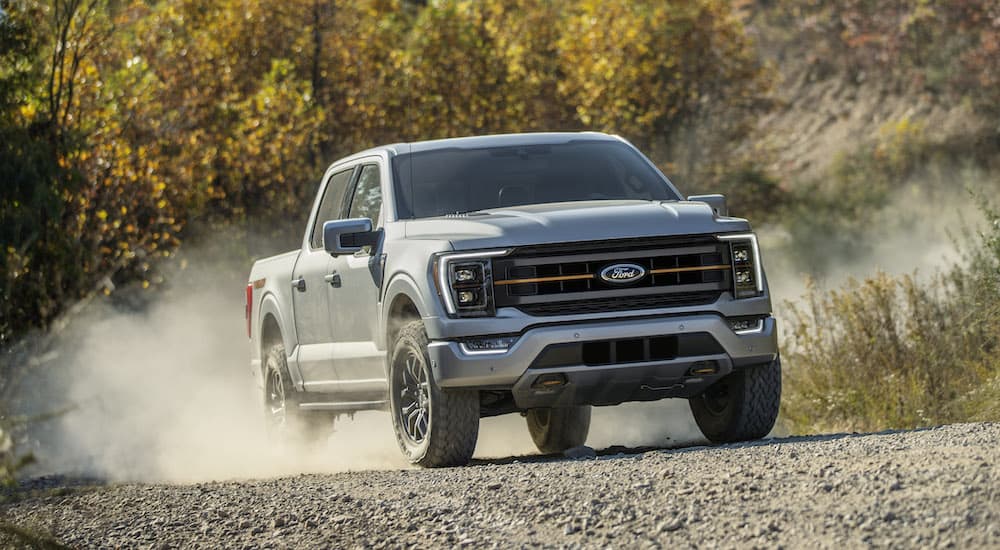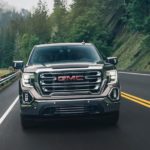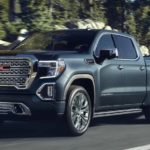There are lots of ways to compare vehicles, from horsepower and cargo capacity to passenger seating and interior tech. These might be some of the more alluring features that draw customers to certain models in the first place, but all too often some of the more practical considerations get left behind. Price is one such factor, but even that can be a frustratingly imprecise way to differentiate between competing models. Even if a vehicle has a relatively modest price tag while it’s sitting on the dealership’s lot, that doesn’t mean it’s necessarily going to be a great value over the course of its service life.
In order to calculate a vehicle’s true value, it’s important to consider a number of factors, including cost of ownership. Cost of ownership refers not just to the vehicle’s initial purchase price, but also the operating costs, which include everything from insurance premiums and fuel costs to maintenance, repair, and labor costs. Depreciation is another important aspect to consider, as some vehicles retain their value better than others. Let’s see how the cost of ownership stacks up in the real world by comparing two of the country’s best-selling pickups: The 2022 Ford F-150 vs. the 2022 GMC Sierra 1500.
What Is TCO?
Total cost of ownership, or TCO, is one of the most useful metrics for comparing vehicles. The term traces its origins back to the late 80s, though the general concept stretches back much further. In the most basic terms, TCO is a management accounting concept that provides a helpful way of determining the total economic value of a given investment by analyzing total cost of acquisition and operating costs. While developed by the tech industry as a way of gauging the financial impact of a product over its life cycle, the concept can be applied to any number of industries, including manufacturing, construction, and software development, to name a few. For example, when it comes to the manufacturing industry, TCO might encompass everything from labor and materials costs to shipping costs, tax credits, and more.
While a useful tool for large industries, TCO can also be scaled down to the individual consumer level and used to find the true cost of products such as cars, trucks, and SUVs. While some of the factors that impact TCO are relatively easy to decipher, like purchase price, fuel economy, and monthly payments, others can be a little more opaque. This makes pre-sale research more important than ever—so you don’t leave the dealership behind the wheel of a vehicle that’s going to be a financial burden down the line.
TCO can be a useful metric for drivers looking to uncover a vehicle’s true value, but it’s not the only one. When researching vehicles, drivers might also come across the term annual cost of ownership. Annual cost of ownership covers much of the same territory as TCO, but breaks ownership cost down by year instead of over a five-year period. In developing these ratings, AAA considers factors like depreciation, loan interest, fuel, insurance, maintenance, and fees.
According to AAA, the average annual cost of ownership for a vehicle in 2021 was $9,666. This figure is a little misleading—as it lumps all vehicle types together despite the fact that some can have drastically different costs of ownership. For example, small sedans are the thriftiest option out there, with an average annual cost of $7,114. Small SUVs fall right in the middle of the pack at $8,394, while half-ton pickups like the F-150 and Sierra 1500 represent the upper end of the spectrum at an average annual cost of $10,839.
Comparing the F-150 vs. the Sierra 1500
So how do the 2022 Ford F-150 and 2022 GMC Sierra 1500 stack up when it comes to TCO? In terms of MSRP, the F-150 comes out on top: $31,520 vs. the Sierra’s $34,600. But let’s break it down into individual factors to make the information a little easier to sift through, starting with Total Cash Price.
Total Cash Price
Total Cash Price (TCP) encompasses not only the sticker price of a new vehicle, but also the equipped options, destination charges, taxes, and fees assessed by the state—as well as any applicable penalties like a tax on less fuel-efficient vehicles. Subtract the value of any manufacturer-to-customer cash rebates or special offers from the dealership and you have a vehicle’s TCP. It’s a little tough to measure the TCP of the 2022 Ford F-150 and 2022 GMC Sierra 1500, as it will ultimately depend on these shifting factors, but at the very least I can compare each vehicle by its Manufacturer Suggested Retail Price (MSRP).
For the purposes of this exercise, I’ll stick to the base-level offerings for each model. For the F-150, that would be the two-door XL trim with regular cab, four-wheel drive, short bed, and a 3.3-L six-cylinder engine. This version of the country’s best-selling pickup has a TCP of $43,557, making it one of the more affordable half-ton pickups on the market. That affordability has made the F-150 one of the most common pickups on the road, regularly outselling other trucks outside of the top three by a margin of almost three to one. This type of ubiquity accompanies some real advantages when it comes to TCO, but I’ll discuss that later on.
The GMC Sierra’s most affordable, four-wheel drive equipped model is the two-door Pro trim with a regular cab, short bed, and 2.7-L four-cylinder engine. With a TCP of $46,036, the Sierra 1500 can’t compete with the F-150 on price. And, while it regularly places fourth in the ultra-competitive half-ton pickup market, its sales still trail the F-150 by a considerable margin.
Depreciation
Depreciation describes the amount by which a vehicle’s value decreases over time from when it’s purchased to when it’s sold. While it can’t account for unforeseeable factors like accidents, defects, or recalls, it’s a useful way to forecast a vehicle’s future value. Depreciation is usually calculated based on average annual mileage, so drivers who spend a lot of time behind the wheel will see their vehicle depreciate at a faster rate.
Most drivers have heard the old adage about a vehicle losing 10 percent of its value as soon as it drives off the lot. This is an example of depreciation, but it’s not quite as dire as it might sound, especially when it comes to pickups. Due to their popularity, reliability, and heavy-duty construction, pickup trucks tend to depreciate at a slower rate than almost any other type of vehicle with an average five-year depreciation of just 42.7 percent.
That makes pickups an exceptional investment compared to other vehicle types, but not all pickups are created equal. For example, the 2022 Ford F-150 will depreciate by $5,276 in its first year and $2,591 in its second year with a total five-year depreciation of $15,919. As for the four-wheel drive XL model I mentioned earlier, it will still command $27,638 after five years.
The four-wheel drive GMC Sierra 1500 Pro fares slightly worse when compared to the F-150. The pickup will lose $5,962 in the first year and $2,747 in the second, with a five-year depreciation of $17,243. This means drivers will be able to ask $28,793 for the pickup five years down the line—which, while slightly higher than the F-150, doesn’t take into account that the GMC was $2,479 more expensive at the initial time of purchase.
Insurance
Insurance costs are another major factor when it comes to determining TCO. A driver’s annual insurance premium will depend on a number of factors, so it’s tough to give an estimate for a specific vehicle. Insurance rates are based not only on the make, model, year, body type, and even color, but also factors specific to the individual driver—including age, marital status, credit history, driving record, and address.
Again, vehicle type also plays a role in cost. Trucks are among the more expensive vehicles to insure, costing $102 more per month on average. That said, there can be wide gaps within the category, with some trucks costing up to 67 percent more than others to insure according to a study by Insure.com. Annual insurance costs are one area where the GMC stacks up quite well against the F-150, though only by the slimmest of margins. The GMC model mentioned above would set drivers back $491 a year in insurance costs, or $2,457 over a five-year period. The F-150 rings in at $515 a year and $2,579 for five years, lagging slightly behind the Sierra.
Fuel
Fuel costs are an important factor for any vehicle, but especially relevant when it comes to half-ton pickups. Since they’re not typically the most fuel-efficient vehicles on the road, calculating your expected fuel costs can prevent a lot of penny pinching down the line. While drivers might expect the Sierra to best the F-150 when it comes to fuel efficiency due to its smaller, four-cylinder engine, that’s not the case. The F-150 XL offers an estimated 25 MPG city and 25 MPG highway to the Sierra 1500’s 19 MPG city and 22 MPG highway.
Those five MPG can make all the difference in terms of how often you’ll be stopping at the pump—and how much it will cost you. This is an important consideration for any drivers in the market for a new pickup. An estimate from vehicle rating and information company Edmunds pegs the Ford’s five-year fuel costs at around $15,490 (assuming 45 percent highway driving and 55 percent city driving) compared to $17,204 for the Sierra 1500.
Repairs
Though difficult to predict, a vehicle’s repair costs and reliability can see its TCO rapidly balloon up. Unexpected repairs are, by definition, unexpected, but by looking at past models and analyzing how they’ve fared over the years—and how many times they-ve been in the shop—experts can predict a model’s future repair costs with relative accuracy. Vehicles are given a score for their reliability, and in that respect, the GMC and Ford pickups are nearly identical. Both models received a 3.5 out of 5 ranking for reliability from RepairPal.com, placing them slightly above the average pickup rating of 3.
The vehicles are both projected to visit a repair shop 0.3 times a year and both have a 17 percent probability of the repairs rising to the level of severe. The pickups do differ when it comes to five-year repair costs, with the Ford averaging $788 a year while the GMC comes in a little higher at $866.
Speaking of repairs, websites like RepairPal can be a handy resource for drivers, cluing them into not only expected repair costs, but potential issues based on past models. For example, the F-150 is most likely to end up in the shop for issues related to a failing cabin heat system while the Sierra 1500 tends to end up in the shop due to a broken transfer case position sensor/selector switch.
True Cost of Ownership
That brings us to TCO, which factors in all the metrics listed above, plus a few, more driver-specific categories I didn’t get into—like tax credits, maintenance, taxes, fees, and financing. According to Edmunds, the F-150 has a TCO of $49,083 with the Sierra 1500 costing a little more at $50,181. It’s not a grand difference, but it’s a relevant factor to consider before you sign on the dotted line to get behind either wheel.
The 2022 Ford F-150 and 2022 GMC Sierra 1500 are both reliable half-ton pickups with much to offer, but when you start to drill down into the factors that contribute to a vehicle’s TCO, the F-150 is simply a better value. While the Ford pickup might have the edge in the head-to-head, drivers will want to consider a wide variety of factors before making a purchase. For example, if you don’t intend on ever selling the vehicle, depreciation might be a less important factor in your decision.
Likewise, if you’re handy with a wrench, higher repair costs might not be too much of a deterrent when you’re opting for the D.I.Y. approach. A little time spent researching the pros and cons of each model can go a long way toward preventing headaches and costly out-of-pocket expenses. So, next time you’re browning some prospective models, remember to dig a little deeper than the sticker price.






